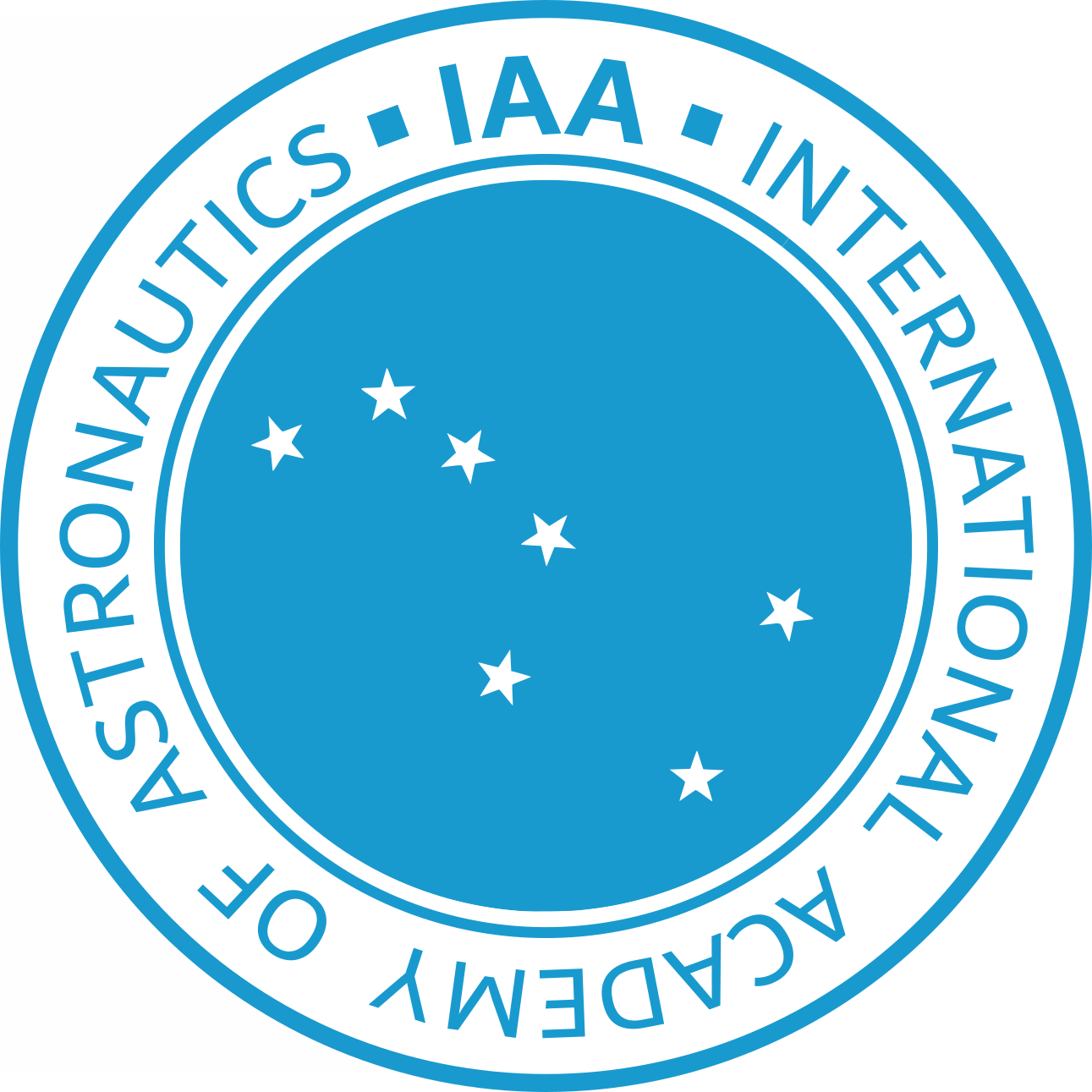| August 01 | Opening of nominations for next year elections |
| January 15 | Deadline to submit nominations |
| February | Peer review |
| March | Awards & Membership Committee Review |
| March | Board of Trustees final approval |
| June-July | Section Ballots sent to Full Members for vote |
| August | Announcement of Election Results |
Members
International Academy of Astronautics (IAA)
2019 new members
Corresponding Members Basic Sciences
Dale P. Cruikshank, USA
G. Randall Gladstone, Canada
Son Nguyen Khoa, Vietnam
Sergey A. Pulinets, Russia
Harold A. Weaver, Jr., USA
Leslie A. Young, USA
Members Basic Sciences
Oleg Korablev, Russia
Yoshiharu Omura, Japan
Michael Panasyuk, Russia
Suzanne E. Smrekar, USA
Angelos Vourlidas, USA
Maria T. Zuber, USA
Thomas H. Zurbuchen, USA
Corresponding Members Engineering Sciences
Antonio Abad Martin, Spain
Didier Alary, France
Jose S. Almeida, Brazil
Alexander O. Animalu, Nigeria
Alim R. Aslan, Turkey
Laszlo Bacsardi, Hungary
Jan Balaz, Slovakia
Vladimir B. Betelin, Russia
Guy A. Boy, USA
Martin Buscher, Germany
Robert P. Chambers, USA
Carlos G. Corredor, Colombia
Dipak Kumar Das, India
Eric W. Davis, USA
Juan-Carlos Dolado-Perez, France
Antonio Elipe, Spain
Bhagavathi Pillai Jayakumar, India
Pariyacheri Kunhikrishnan, India
Romulus Lungu, Romania
Benjamin K. Malphrus, USA
Leonardo Mazzini, Italy
Manuel Metz, Germany
Vanniaperumal Narayanan, India
Samiayyan Pandian, India
Antonio Paolozzi, Italy
Stephan Roemer, Germany
Cesar Santisteban, Peru
Shujiro Sawai, Japan
Raman Umamaheswaran, India
Jerome Vila, France
Christopher S. Welch, UK
Danielle R. Wood, USA
Members Engineering Sciences
Vladimir M. Agapov, Russia
Salem H. Al Marri, United Arab Emirates
Jean-Marc Astorg, France
Ognjan Bozic, Germany
James Chilton, USA
Pedro Duque Duque, Spain
Pini Gurfil, Israel
Tatsuaki Hashimoto, Japan
Fazle Hussain, USA
Elbrous M. Jafarov, Azerbaijan
Roman Kezerashvili, USA
Holger Krag, Germany
Hitoshi Kuninaka , Japan
Jer-Chyi Liou, USA
Roberta Mugellesi-Dow, Italy
Marc Rayman, USA
Anna H. E. Rathsman, Sweden
Gennaro Russo, Italy
Jean-Marc Salotti, France
Marc Serres, Luxembourg
David Spencer, USA
Corresponding Members Life Sciences
Christos Frantzidis, Greece
Alain Maillet, France
Lina Qu, China
Leticia Vega, USA
Ruilin Wu, China
Guangming Zhou, China
Members Life Sciences
Philippe Arbeille, France
Radvan Bahbouh, Czech Republic
Mathias Basner, Germany
Kim A. Binsted, USA
Stephane Blanc, France
Alexander Chouker, Germany
Peter H.U. Lee, USA
Elena S. Luchitskaya, Russia
Thomas P. Stafford, USA
Jan Stepanek, Switzerland
Elena S. Tomilovskaya, Russia
Corresponding Members Social Sciences
Natália Archinard, Switzerland
Nicolas Chamussy, France
Iryna D. Dyachuk, Ukraine
Bhavya Lal, USA
Colm F. Larkin, Ireland
Mykola Lytvyn, Ukraine
Weihua Ma , China
Jeffrey K. Manber, USA
Maria-Gabriella Sarah, Lebanon
Almaz S. Shanazarov, Kyrgyzstan
Alexander Soucek, Austria
Xiaolong Zhao, China
Members Social Sciences
Louis D. Friedman, USA
James Keravala, UK
Ge Luo, China
Joseph P. Landon, USA
Stephan C. Mayer, Austria
Jana Robinson, Czech Republic
John C. Roth, USA
Alchin Shirin-Zada, Azerbaijan
Lyn D. Wigbels, USA
Zhenjun Zhang, China
Wenbo Zhao, China
Yonggang Yang, China
Aoao Xu, China
Haibo Wang, China
The following members are no more contactable. Their memberships are now suspended. Please contact us if you have any contact information.
- Alcala Erminy Jose M
- Bochev Alexander Z.
- Gorbulin Vladimir P
- Kroell Walter Stefan
- Nonweiler Terence R.
- Raykunov Gennady G.
- Samara Noah A
- Schondel J. Patrick
Obituary 2020
We regret to inform you of the passing of:
Obituary 2018-2019
We regret to inform you of the passing of:
– 02 November 2019: Max Calabro, France, member of Engineering Sciences section
– 11 October 2019: Alexei Leonov, Russia, Honorary Member
– 10 October 2019: Bouraoui Ben Ali, Tunisia, member of Engineering Sciences section
– 14 September 2019: Andre Remondiere, France, member of Engineering Sciences section
– 11 September 2019: Scott A. Manatt, USA, member of Life Sciences section
– 03 August 2019: Nikolay S. Kardashev, Russia, member of Basic Sciences section
– 22 July 2019: Christopher C. Kraft, USA, member of Engineering Sciences section
– 20 January 2019: Karel Kudela, Slovak Republic, member of Basic Sciences section
– 01 October 2018: John C. Sommerer, USA, member of Engineering Sciences section
– 19 August 2018: Wang Dechen, China, member of Engineering Sciences section
– 29 June 2018: Elisabeth Back-Impallomeni, Italy, member of Social Sciences section
– 06 May 2018: Patricia M. Sterns, USA, member of Social Sciences section
– 19 February 2018: Michael F. O’Brien, USA, member of Social Sciences section
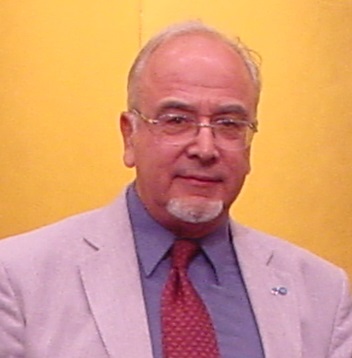 |
02 November 2019: Max Calabro, France, member of Engineering Sciences section
He was Head of the Propulsion Department at EADS Space, Les Mureaux, France. He was a specialist of propulsion very active in the Academy. He was internationally known as a space expert, he holds patents in propulsion and contributed to scientific development in this field. He worked on all type of launchers and missiles, architecture and design, both solid, liquid or airbreathing. He participated to all major French and European programs, in the field of propulsion and energy. He was elected corresponding member in 2000 and a full member in 2005 of the International Academy of Astronautics. |
 |
11 October 2019: Alexei Leonov, Russia, Honorary Member
Legendary cosmonaut Alexei Leonov, the first human to walk in space and later the commander of the Russian Soyuz spacecraft that docked with a NASA Apollo capsule, symbolizing a historic thaw in the Cold War, has died after a long illness. An accomplished amateur artist and a widely respected statesman in the international space community, Leonov remained a lifelong friend of his Apollo-Soyuz Test Project crewmates and a source of inspiration to a younger generation of cosmonauts who carried his photo to the International Space Station and marked his 85th birthday during a spacewalk in May. He was elected a Full Member of the International Academy of Astronautics in 2018 and an Honorary Member in 2019. |
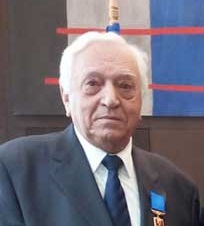 |
10 October 2019: Bouraoui Ben Ali, Tunisia, member of Engineering Sciences section
He was President, Tunisian Organization for space education, Saint Exupery city, Le Belvedere, Tunisia. He was the First Tunisian Pilot and the First Tunisian pilot trainer. He was President and Technical Director at the Tunisian Aviation Federation. He was Center Manager for flew sail Ressas and Center Manager for Motor Flight. He was awarded “Vermeil Medal” (France) and the Youth Order of Merit. He was Center Manager for Motor Flight and Chief Pilot, Tunis Aeroclub. He was project manager at the Aeroclub de France. He was President of the Tunisian aviation federation from 1989 to 1990. He was elected corresponding member in 2010 and a full member in 2014 of the International Academy of Astronautics. |
 |
14 September 2019: Andre Remondiere, France, member of Engineering Sciences section
He was Chairman of the Institute for Space Sciences and their applications in Toulouse (ISSAT). The institute deals with education and training for space-related activities. He was Chair of the Section 2 on Engineering Sciences of the International Academy of Astronautics (IAA). He was Central Director of Quality and Director of the Guiana Space Center at CNES. He was General Manager of INTESPACE (susidiary of CNES for environmental tests). He was also Head of research group on guidance and control at ONERA. He was an expert in the field of piloting and stabilization of the sounding rockets and planes and in the field of recovery system for sounding rockets. He was elected corresponding member in 1981 and a full member in 1985 of the International Academy of Astronautics. |
 |
11 September 2019: Scott A. Manatt, USA, member of Life Sciences section
He was the New Development Manager of the Space ECS at Allied Signal Aerospace Equipment Systems, Torrance, CA. He worked in the development of new technology and subsystems for spacecraft systems and equipment. Some examples are the Apollo Lunar Excursion Model (LEM) Supercritical Helium Tank, and Development of Inert Gas Generation for Fire Suppression. His contributions have been successfully applied to numerous aerospace and aircraft systems for the US Air Force, Navy, Army, and NASA. These contributions were made while he worked for the Air Research Mfg Co., Garett Corporation and Allied Signal in various technical and management positions. These included Engineering Group Leader, Customer Field Representative, Business Development Manager, and Life Support Marketing Manager. He was elected corresponding member in 1999 and a full member in 2004 of the International Academy of Astronautics. |
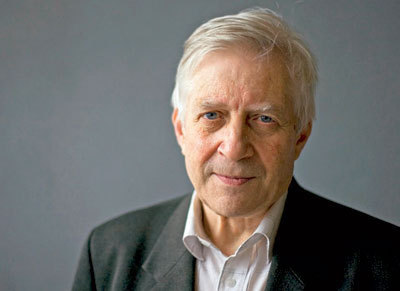 |
03 August 2019: Nikolay S. Kardashev, Russia, member of Basic Sciences section
Nikolai Semenovich Kardashev died on August 3, 2019. He was a Soviet and Russian astrophysicist, Doctor of Physical and Mathematical Sciences, and the deputy director of the Astro Space Center of P.N. Lebedev Physical Institute of the Russian Academy of Sciences in Moscow. Nikolai Kardashev plaid a central role in the development of SETI in the Soviet Union in the 1960s. Kardashev became the leader of Soviet SETI in 1963, when he examined quasar CTA-102, the first Soviet effort in SETI. In this work he came up with the idea that some galactic civilizations would be perhaps millions or billions of years ahead of us, and created the Kardashev classification scheme to rank such civilizations. In 1986 Kardashev was elected a Corresponding Member of the International Academy of Astronautics, and in 1991 he became a Full Member. Nicolai Kardashev will forever be remembered as a SETI very influential thinker, plus a leader in innovative space missions. |
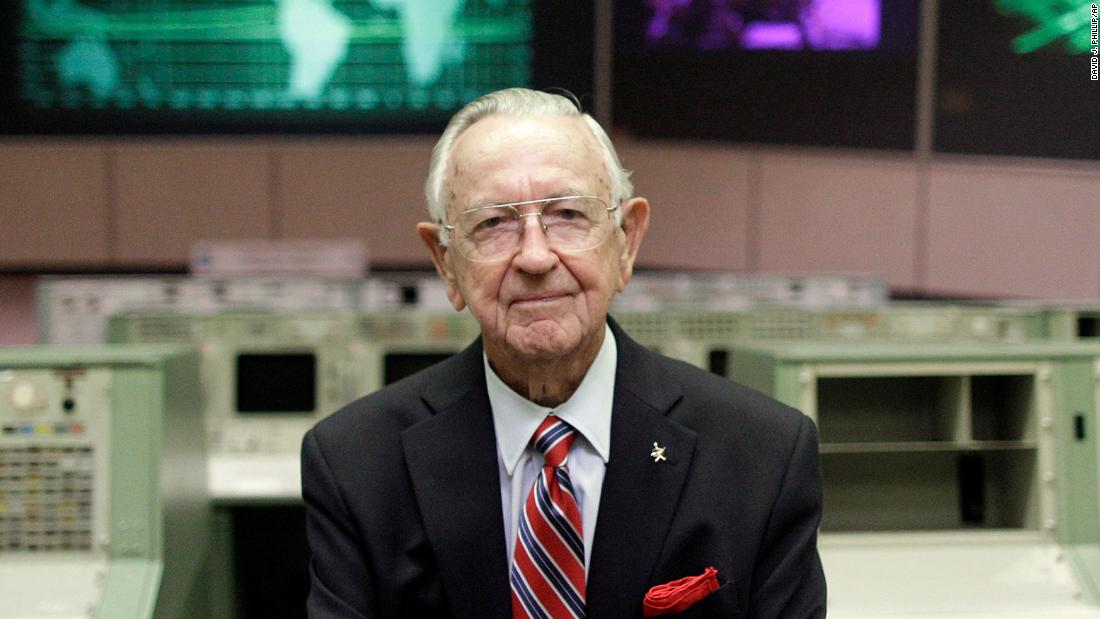 |
22 July 2019: Christopher C. Kraft, USA, member of Engineering Sciences section
Christopher Kraft, von Karman Award 1994 of the International Academy of Astronautics (IAA), died on July 22, 2019, two days after the 50th anniversary of the Apollo 11th moon landing. Chris Kraft invented the mission planning and control processes required for crewed space missions, in areas as diverse as go/no-go decisions, space-to-ground communications, space tracking, real-time problem solving and crew recovery, according to NASA. This made him the godfather of NASA’s Mission Control and the Academy recognized him for this achievements. Chris Kraft born in 1924 was elected corresponding member in the Engineering Science section in 1973 and a full member in 1985. |
 |
20 January 2019: Karel Kudela, Slovak Republic, member of Basic Sciences section
Professor Karel Kudela was one of the founders of the Space Physics department at the Institute of Experimental Physics of the Slovak Academy of Sciences in Košice, which he led until 2011 and where he contributed to the work until his death. |
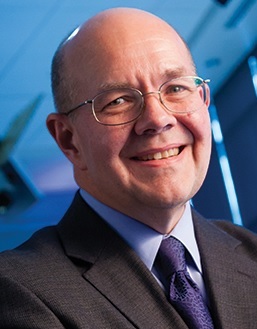 |
01 October 2018: John C. Sommerer, USA, member of Engineering Sciences section
Dr. John C. Sommerer, Member of the International Academy of Astronautics, Engineering Sciences section, passed away on October 1st, 2018. |
 |
19 August 2018: Wang Dechen, China, member of Engineering Sciences section
It is with deep regret that we received the news of the death of Professor WANG Dechen, who was elected in 1992 as Full Member of the Engineering Sciences section of the International Academy of Astronautics. Professor WANG Dechen was born in February 1933 and graduated from Beihang University in 1957. He joined China Academy of Launch Vehicle Technology (CALT) in 1959 and was engaged in general design of launch vehicles. He was the Chief Designer for several launch vehicles and made great contributions to the development of China’s launch vehicle technology. On August 19, 2018, Professor WANG Dechen died of illness in Beijing at the age of 85. He was elected Corresponding Member in 1987 and Full Member in 1992 of the International Academy of Astronautics. |
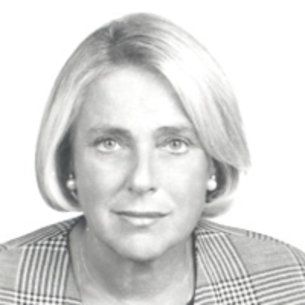 |
29 June 2018: Elisabeth Back-Impallomeni, Italy, member of Social Sciences section
Prof. Elisabeth Back-Impallomeni, Member of the International Academy of Astronautics, Social Sciences section, since 1999, passed away on 29 June 2018. She was a Professor of International Law and Organization, at the University of Padua, Italy and a Lawyer, expert in Austrian and German law. She has trained both industrial leaders, insurance executives and lawyers currently involved in space law programs, projects and activities. She was the Chair of the IAA Commission 5 – Space Policies, Law & Economics in 2013 and was leading Academy activity in many program committees of IAA Symposia. We will miss a great expert and a friend of the Academy. She will remain an example of courage and dynamism for the young generations. We will all miss her. |
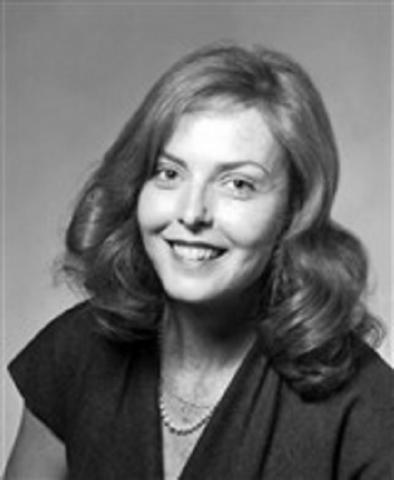 |
06 May 2018: Patricia M. Sterns, USA, member of Social Sciences section
Dr. Patricia M. Sterns, Member of the International Academy of Astronautics, Social Sciences section, since 1997, passed away on May 06, 2018 at the age of 66. She was initially elected a corresponding member of the Academy in 1993 and was living in Phoenix, Arizona. The Academy will miss her and would like to extend to her husband Leslie Tennen, Legal Counsel of the Academy, its heartfelt condolences. |
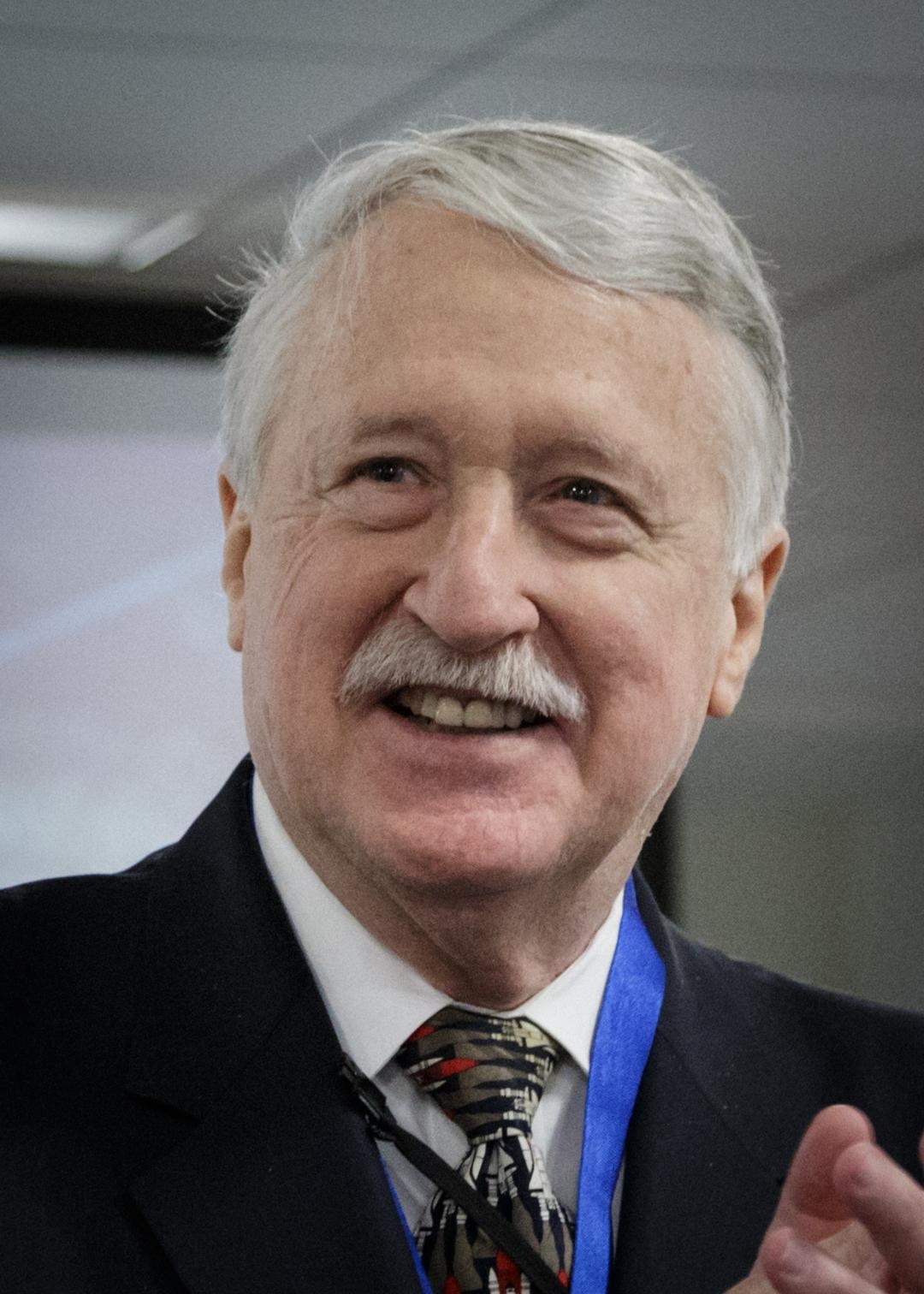 |
19 February 2018: Michael F. O’Brien,USA, member of Social Sciences section
Mr. Michael F. O’Brien, Member of the International Academy of Astronautics, Social Sciences section, since 2012, passed away on February 19, 2018 at the age of 72. As Associate Administrator for International and Interagency Relations, O’Brien was responsible for NASA’s interaction with Executive Branch offices and agencies; international relations for each NASA Mission Directorate; administration of export control and international technology transfer programs; and, NASA advisory councils and commissions. He previously served as Deputy Assistant Administrator for External Relations (Space Flight). He was responsible for the international aspects of NASA’s human space flight activities. O’Brien also was responsible for agreements related to Space Shuttle flights for international astronauts and NASA relations with other space agencies, such as those of Israel, China and India. O’Brien came to NASA from the United States Navy. He served as a naval aviator in command positions and in Washington on the staffs of the Chief of Naval Operations and the Chairman of the Joint Chiefs of Staff. He also served as the Deputy Director for Research at the Institute for National Strategic Studies in Washington. |
Obituary 2017
We regret to inform you of the passing of:
– 17 October 2017: Isabella Diederiks-Verschoor, Netherlands, member of Social Sciences section
– 06 August 2017: Chen Huaijin, China, member of Engineering Sciences section
– 27 July 2017: Amnon Ginati, Germany, member of Engineering Sciences section
– 25 July 2017: Yash Pal, India, member of Social Sciences section
– 24 July 2017: U.R. Rao, India, member of Engineering Sciences section
– 21 June 2017: Zhu Yilin, China, member of Social Sciences section
– 24 May 2017: Giovanni Bignami, Italy, member of Basic Sciences section
– 08 April 2017: Georgi Grechko, Russia, member of Engineering Sciences section
– 12 February 2017: Ren Xinmin, China, member of Engineering Sciences section
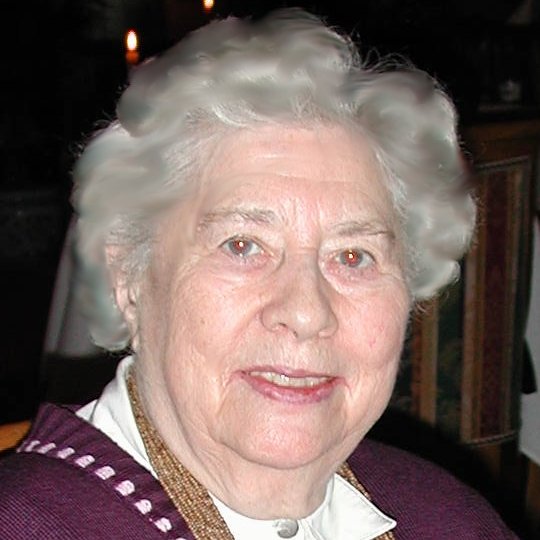 |
17 October 2017: Isabella Diederiks-Verschoor, Netherlands, member of Social Sciences section
Prof. Dr. Isabella Diederiks-Verschoor was one of the founders of the field of space law and of the International institute of Space Law (IISL). She was IISL’s President from 1973-1990. She passed away on 17 October 2017 at the age of 102. She studied law at Leiden University and practised law in Amsterdam for six years. In 1943 she defended her PhD thesis on the 1938 Brussels Convention for the Unification of Certain Rules Relating to Assistance and Salvage of Aircraft at Sea at the University of Utrecht. She was appointed as a lecturer there in 1953, and was professor of air and space law from 1979 until her retirement in 1984. In 1985 she became Vice-Chair of the newly established International Institute of Air and Space Law at Leiden University. She served in that capacity until the early 1990s, after which she became honorary board member. Her legacy is remembered today through the IISL Diederiks-Verschoor award. She was elected Corresponding Member in 1967 and Full Member in 1981 of the International Academy of Astronautics. |
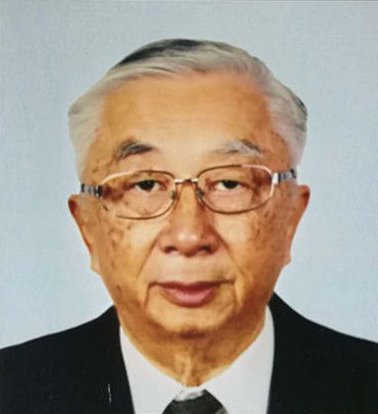 |
06 August 2017: Chen Huaijin, China, member of Engineering Sciences section (1929-2017)
Prof. Chen Hauijin was one of the pioneers and founders of China’s space industry, and a famous expert in radar technology and rocket control system. On August 6, 2017, Prof. Chen Huaijin died at the age of 88. In March 1957, he joined in the Fifth Academy of the Ministry of National Defense, and successively held positions as Vice President of the Second Academy of the Ministry of Space Industry, Chief Engineer, Chief Designer of Stimulation Engineering and Deputy Director of S&T Committee of Ministry of Space Industry, as well as the Chair of Military Stimulation Professional Research Group of State Commission of Science and Technology for National Defense Industry. He served as Adjunct Professor of Harbin Institute of Technology, Vice President of Chinese Society of Unmanned Aerial Vehicle of Chinese Society of Astronautics and Vice President of China Academy of System Stimulation. He has been engaged in the research and development of China’s radar technology and rocket control system for a long time. He has won the First Prize of National Prize for Progress in Science and Technology, and the First Prize for Progress in Aeronautical and Astronautical Science and Technology. He was elected Full Member in 2001 of the International Academy of Astronautics. |
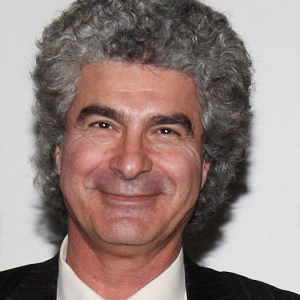 |
27 July 2017: Amnon Ginati, Germany, member of Engineering Sciences section (1953-2017)
We have learned with great sadness the passing of Professor Amnon Ginati, Full Member Section 2 Engineering Sciences of the International Academy of Astronautics (IAA) on July 27, 2017. He was the Head of the Earth Observation Future Programmes Department at ESA / ESTEC, Noordwijk, The Netherlands. He contributed significantly to a number of German and international space projects and concepts. He advanced new ideas for small satellite missions and combined industry and university activities to pursue space science and application projects. He established industry joint projects and university cooperation’s research activities with entities from USA, Israel, China, Russia and other countries. He initiated and managed the micro-satellite TUBSAT of the Technical University of Berlin. Author of 50 publications and 3 patents. He was elected Corresponding Member in 2002 and Full Member in 2005 of the International Academy of Astronautics. |
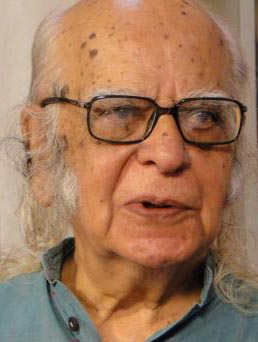 |
25 July 2017: Yash Pal, India, member of Social Sciences section (1926-2017)We have learned with great sadness the passing of Professor Yash Pal, Full Member Section 4 Social Sciences of the International Academy of Astronautics (IAA) on July 25, 2017. In the 1970s, as director of the Space Applications Centre, a wing of the Indian Space Research Organisation (ISRO) set up to conceptualise applications for satellite technology for societal needs, Pal put together a team of young scientists from the Tata Institute of Fundamental Research (TIFR) in Mumbai to develop remote-sensing technologies, disregarding suggestions that scientists be sent to the U.S. for training. He began his career as a professor at the TIFR. He went on to hold several senior position in government as Chief Consultant with the Planning Commission from in 1983, Secretary, Department of Science and Technology from 1984 to 1986) and as chairman of the University Grants Commission (UGC) for five years from 1986 to 1991. A scientist of international repute, Prof. Pal was awarded the Padma Bhushan in 1976 and India’s second highest civilian honour, the Padma Vibhushan, in 2013. He made significant contributions in the field of science and to the study of cosmic rays, high-energy physics and astrophysics. A well known science communicator, Prof. Yash Pal brought galaxies and cosmic rays to living rooms across India via ‘Turning Point’, an extremely popular science show on Doordarshan. He was elected Corresponding Member in 1990 and Full Member in 1995 of the International Academy of Astronautics. |
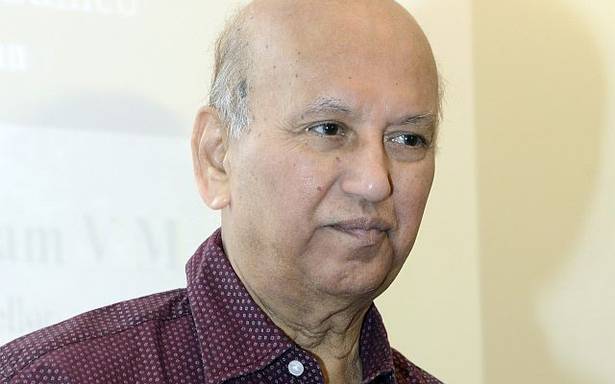 |
24 July 2017: U. Ramachandra Rao, India, member of Engineering Sciences section (1932-2017)We have learned with great sadness the passing of Professor U.R. Rao, Full Member Section Section 2 Engineering Sciences of the International Academy of Astronautics (IAA) on July 24, 2017. Prof. Rao was involved in all ISRO missions till date in one capacity or the other. Udupi Ramachandra Rao, the grand old man of Indian space programme, has been active almost until his last days. The celebrated space scientist was the fourth Chairman of the ISRO in its critical formative years between 1984 and 1994. ISRO credits him with establishing the development of indigenous satellite technology, giving thrust to early rocket development efforts with the ASLV and the PSLV. He initiated the development of the medium powered GSLV rocket for two-tonne spacecraft in 1991. Prof. Rao was decorated with Padma Vibhushan in 2017 and the Padma Bhushan in 1976. He is the only Indian to date to have been inducted into the Satellite Hall of Fame, Washington, in 2013 by the Society of Satellite Professionals International. He was awarded the IAA von Karman Award in 2005 and he received the IAA Book Award for the book on ‘Space Technology for Sustainable Development’ in 1997. He was elected Corresponding Member in 1991 and Full Member in 1996 of the International Academy of Astronautics. |
 |
21 June 2017: Zhu Yilin, China, member of Social Sciences section (1934-2017)
We have learned with great sadness the passing of Professor Zhu Yilin, Full Member Section Section 4 Social Sciences of the International Academy of Astronautics (IAA) on June 21, 2017. He was a Research Professor and Secretary General of Science and Technology Commission of Chinese Academy of Space Technology (CAST), Beijing, China. As a chief designer, he has made contributions for the engineering development of LM-1 launch vehicle and the «SJ-2» scientific satellites. His personal contribution was in the application of systems engineering concepts for the design of those complex systems. He made a major contribution to the development of Chinese scientific satellites, including multi-satellite launched on one rocket. Author of more than 100 publications. He was elected Corresponding Member in 1999 and Full Member in 2004 of the International Academy of Astronautics. |
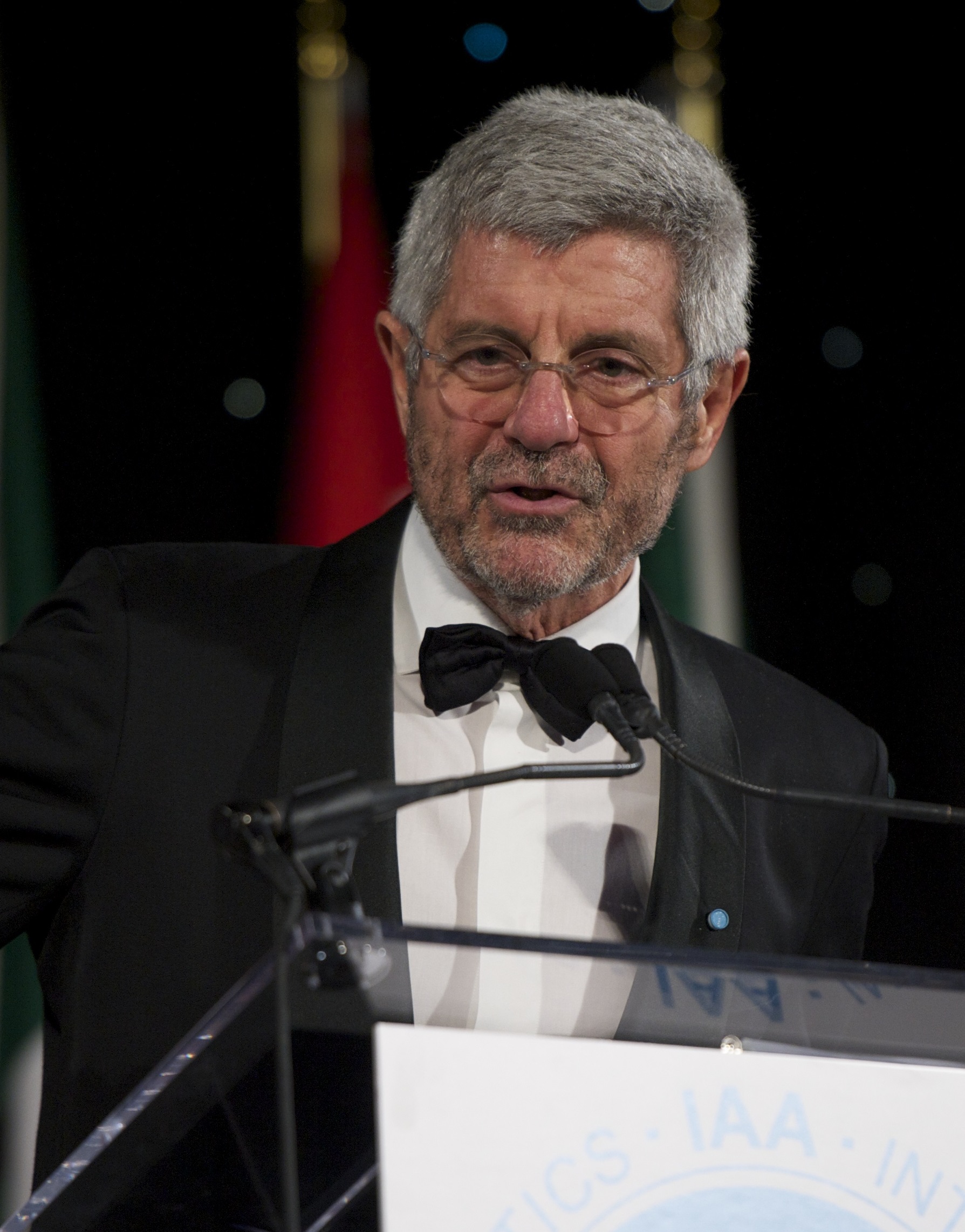 |
24 May 2017: Giovanni Bignami, Italy, member of Basic Sciences section
We have learned with great sadness the passing of Professor Giovanni Fabrizio Bignami, or “Nanni” to his friends, current Trustee of the International Academy of Astronautics (IAA) on Wednesday 24 May 2017, at the age of 73. Giovanni Bignami was the 2014 von Karman Award recipient that he received at the occasion of the second IAA Heads of Space Agencies Summit in Washington DC, USA, where 35 Heads of agencies were present. He joined the Academy in 2000 and was involved in many IAA activities. As past President of Committee on Space Research (COSPAR) he was very active in Academy days during the COSPAR general assembly. He was President of the Italian Space Agency (ASI) in Roma, Italy where he was previously the Director of Science. Earlier, he was Director of the Centre d’Etudes Spatiales des Rayonnements in Toulouse (France). He started his career as researcher in astrophysics of high energies and was the principal investigator for the mission “cornerstone” XMM of the European Space Agency. He is a member of the National Academy of Lincei. He was elected Full Member (section 1 Basic Sciences) of the International Academy of Astronautics in 2000. |
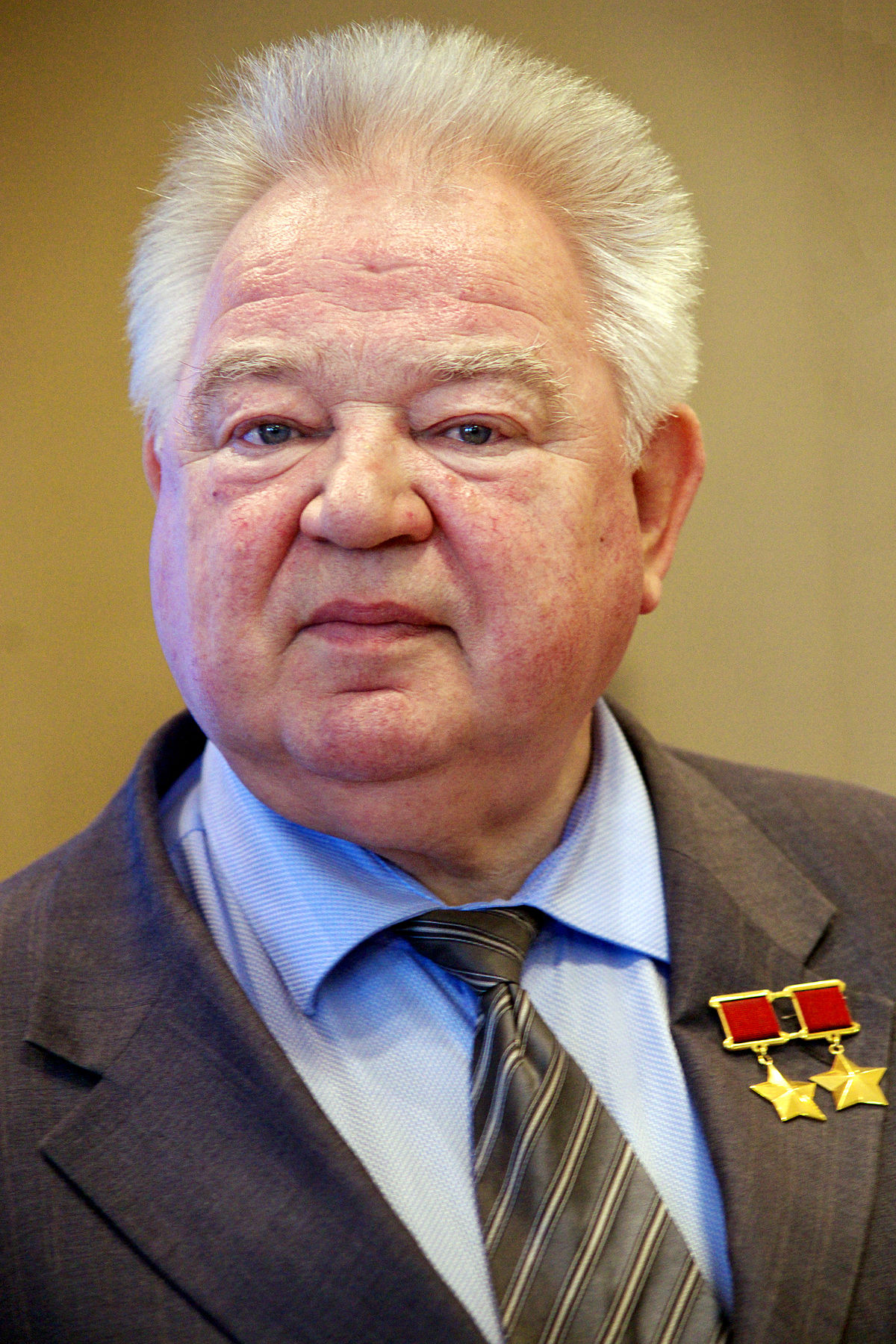 |
08 April 2017: Georgi Grechko, Russia, member of Engineering Sciences section
A veteran of three spaceflights during the heydey of the Soviet space program, Grechko was also a skilled engineer and an avid popularizer of spaceflight. He finished high school in 1949 and graduated with distinction from Leningrad Military Mechanical Institute (Voenmekh) in 1955, after which he was recruited to work in the Special Design Bureau 1 (OKB-1) outside Moscow, the cradle of the Soviet ballistic missile and space program led by Sergei Korolev. One of Grechko’s early assignments was to calculate trajectories for what would become the world’s first satellite, Sputnik 1. In 1975 he made it into Earth orbit as the flight engineer on Soyuz 17. On December 10, 1977, Grechko and Yuri Romanenko blasted off onboard Soyuz 26 spacecraft bound to the Salyut 6 space station. In 1985, at the age of 54, Grechko began his third spaceflight onboard Soyuz T-14, which took him to the Salyut 7 orbiting lab for another extended stay. Altogether, on three expeditions to three different Soviet space stations, Grechko logged a total of nearly 135 days in space. For that he was twice named Hero of the Soviet Union, the highest official honor in the nation. After his retirement, Grechko stayed until 1986 at NPO Energia (now RKK Energia), the nation’s prime developer of space vehicles. In May of the same year, he joined the Institute of Biosphere Physics within the Soviet Academy of Sciences, where he served as a cosmonaut researcher until March 1992. |
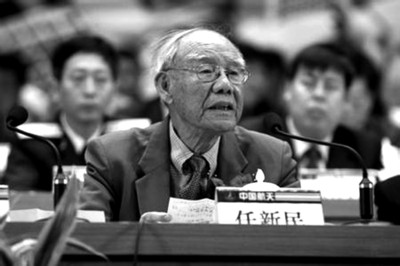 |
12 February 2017: Ren Xinmin, China, member of Engineering Sciences section
Prof. Ren Xinmin was one of the founders of China’s “Atomic and hydrogen bombs, missiles and man-made satellite” program. He was an important pioneer of China’s missile and space technologies, a famous expert in space technology and liquid rocket engine technology and received the top honor prize for the fifty-year founding of China’s space industry. He was an Academician of Chinese Academy of Sciences (CAS) and International Academy of Astronautics (IAA). Prof. Ren Xinmin was born in December 1915. In 1945, He went to the United States for a Master’s Degree in mechanical engineering and a Doctoral Degree in engineering mechanics in the institute of University of Michigan. After the founding of new China in 1949, Prof. Ren returned to China for the construction of China’s space industry and was responsible for research and testing on liquid rocket. Being the technical lead of launch vehicles, he took charge of the launch of China’s first man-made satellite “Dongfanghong-1”. Afterwards, he served as the chief designer and presided over the development and launches of China’s 6 major space engineering programs, such as experimental satellite communications, practical satellite communications, Fengyun-1 meteorological satellite and commercial launching. Prof. Ren Xinmin was the Vice Minister of National Seventh Machinery Industry, Director of Science and Technology Commission of the Ministry of Space Industry and Senior Technical Consultant of the Ministry of Aeronautics and Astronautics. Since 1979, he was successively elected as the first and second President and the third Honorary President of the Chinese Society of Astronautics (CSA). In 1980, he was elected to be an academician of Chinese Academy of Sciences. Since 1985, he had served as the Deputy Director of the National Defense Science and Technology Progress Committee and adjunct team leader of space panel. In 1988, he was appointed as member of National Academic Degree Committee by the State Council. Besides, he was offered the adjunct professors by the Harbin Institute of Technology and Nanjing University of Science and Technology. He was elected Full Member (section 2 Engineering Sciences) of the International Academy of Astronautics in 1985. |
Obituary 2016
We regret to inform you of the passing of:
– 18 December 2016: Andre Jaumotte, Belgium, member of Engineering Sciences section
– 08 December 2016: John H. Glenn, Jr., USA, Honorary member
– 15 September 2016: Jacques Villain, France, member of Social Sciences section
– 29 August 2016: Hermann Strub, Germany, member of Engineering Sciences section
– 28 July 2016: Douglas A. O’Handley, USA, member of Life Sciences section
– 19 June 2016: Horst Rauck, Germany, member of Engineering Sciences section
– 30 April 2016: Jean-Charles Poggi, France, member of Engineering Sciences section
– 18 April 2016: Dietrich Rex, Germany, member of Engineering Sciences section
– 14 April 2016: Liang Si-Li, China, member of Engineering Sciences section
– 07 April 2016: Herve Moulin, France, member of Social Sciences section
– 25 March 2016: Martti Tiuri, Finland, member of Engineering Sciences section
– 19 March 2016: Angelo Miele, USA, member of Engineering Sciences section
– 26 January 2016: Makoto Igarashi, Japan, member of Life Sciences section
Obituary year 2015 is available in the History Section of the website
 |
18 December 2016: Andre Jaumotte, Belgium, member of Engineering Sciences section
André Jaumotte has been a professor and Dean at the Université Libre de Bruxelles, as well as the head of the institute of applied mechanics, institute of aeronautics, vice-chancellor and Chairman of the board of that University. He also served as the chairman of the board of the von Karman Institute of Fluid Dynamics, and a member of the board of directors in the Belgium society of mechanical and environmental engineering. He was elected foreign associate at the French Academy of Sciences – Mechanical and Computer Science section. He was a specialist in fluid mechanics. In addition to his research activities, he has been an expert for 20 years in Belgium and Europe on the assessment of nuclear safety and non-renewable energies. He was elected Corresponding Member in 1964 and Full Member in 1965 of the International Academy of Astronautics. |
 |
08 December 2016: John H. Glenn, Jr., USA, Honorary member
John Glenn Jr. was born on July 18, 1921 in Cambridge, Ohio and he died on December 8, 2016 at the age of 95. Before joining NASA, he was a distinguished fighter pilot in both World War II and Korea. A Marine pilot, he was selected in 1959 for Project Mercury astronaut training. Glenn was selected for the first orbital flight, and on February 20, 1962, he piloted the Mercury-Atlas 6 “Friendship 7” spacecraft on the first manned orbital mission of the United States. Launched from Kennedy Space Center, Florida, he completed a successful three-orbit mission around the earth, reaching a maximum altitude (apogee) of approximately 162 statute miles and an orbital velocity of approximately 17,500 miles per hour. Glenn’s “Friendship 7” Mercury spacecraft landed approximately 800 miles southeast of KSC in the vicinity of Grand Turk Island. Mission duration from launch to impact was 4 hours, 55 minutes, and 23 seconds. He was promoted to the rank of Colonel in October 1964 and retired from the Marine Corps on January 1, 1965. He was a business executive from 1965 until his election to the United States Senate in November 1974. Glenn retired from the U.S. Senate in January 1999. In 1998, while still a sitting senator, he became the oldest person to fly in space, and the only one to fly in both the Mercury and Space Shuttle programs as crew member of the Discovery space shuttle. STS-95 Discovery (October 29 to November 7, 1998) was a 9-day mission during which the crew supported a variety of research payloads including deployment of the Spartan solar-observing spacecraft, the Hubble Space Telescope Orbital Systems Test Platform, and investigations on space flight and the aging process. The mission was accomplished in 134 Earth orbits, traveling 3.6 million miles in 213 hours and 44 minutes. He was awarded the Presidential Medal of Freedom in 2012. He was elected Honorary Member of the International Academy of Astronautics in 1964. |
 |
15 September 2016: Jacques Villain, France, member of Social Sciences section
He was Space Advisor of SAFRAN Company. He was a recognised leader of the history of astronautics and development of spacecraft technology. A graduate of the technical schools of the French navy, he placed his engineering skills successively at the service of the ballistic and aerodynamic research laboratory in Vernon, the missiles directorate at French defence procurement agency DGA, and companies SEP and then SNECMA. He made a name for himself through his studies into guidance and control of ballistic missiles. Head of corporate communications at SEP, he had also taken an active interest in economic intelligence, heading its Industrial Property department. He has published on American expeditions to the Moon, American/Russian rivalry in space exploration, international military nuclear force, the French deterrent force, exploration of the planet Mars and the possibility of sending humans there. He has received the Social Science Book Award in 1995. He was elected Corresponding Member in 1993 and Full Member in 1998 of the International Academy of Astronautics. |
 |
29 August 2016: Hermann Strub, Germany, member of Engineering Sciences section
He was Director General, Head of Basic Research, Research Coordination, International Cooperation, Federal Ministry for Research and Technology (BMFT), Bonn, Germany. He was Deputy Director General, Head of Life Science Programs BMFT. He was also Deputy Director General, Head of Aerospace Programs BMFT. Before that he was Head of Sections (Space and Aeronautical Programs, Research and Technology, Materials, Energy, Propulsion). He was scientist, direct conversion of nuclear energy into electricity, plasma physics, heat pipes, Joint Research Center of the European Communities (EURATOM), Ispra, Italy. He was assistant Professor at the Technical University of Karlsruhe. He was Officer of the French Legion of Honour and first class Cross of Merit, Germany. He acted as IAA Regional Secretary for Germany. He was elected Corresponding Member in 1989 and Full Member in 1992 of the International Academy of Astronautics. |
 |
28 July 2016: Douglas A. O’Handley, USA, member of Life Sciences section
He worked at the U.S. Naval Observatory in Washington, D.C. while receiving his doctorate in Astronomy-Celestial Mechanics at Yale University in 1967. His career began at the Naval Observatory accompanying atomic clocks to remote islands in the Pacific and Australia before joining NASA JPL where he managed a robotics group focusing on robotic vision and navigation, then NASA Headquarters in biomedical engineering in the Office of Industry Affairs and Technology Transfer. He returned to the JPL Biomedical Application Office through 1984, when he transitioned to Ames for a period including time on the Life Sciences Senior Management Council. He was detailed to TRW in Southern California before returning to NASA Headquarters as Deputy Associate Administrator for Exploration. From 1988-1992 he was a member of the committee that created the Space Exploration Initiative – a nationwide planning initiative to take NASA into Extended Duration Exploration Missions, back to the moon and on to Mars. He created the Exploration Advisory Committee and worked with the White House’s National Space Council. In 1992, he returned to California and Ames where he developed the Center for Mars Exploration. In the mid-1990s, he created and taught a multi-disciplinary undergraduate course in astrobiology at Santa Clara University. He was also a consultant with Orbitec in Madison, WI. He was elected Corresponding Member in 1992 and Full Member in 1997 of the International Academy of Astronautics. |
 |
19 June 2016: Horst Rauck, Germany, member of Engineering Sciences section
Born on May 22, 1938 in Offenbach am Main, Horst Rauck studied Mechanical and Aerospace Engineering at the Technical University Darmstadt. He joined the newly founded space division of MAN-Turbo. In 1969, he became head of energy and space technology. He served as a member of the Executive Board, and then chair, MAN Technologie AG. In 2002 he moved to the Supervisory Board of MAN Technologie where he stayed until the company was sold to OHB/Apollo Capital Partners in 2005. His duties at MAN included the development and early production of the gas centrifuge for uranium enrichment, renewable energy systems and the Ariane launcher family, which brought him into close contact with French industry. From 1987 to 2003 he also was at the Arianespace board. |
 |
30 April 2016: Jean-Charles Poggi, France, member of Engineering Sciences section
He was director of the strategic and space systems division, Aerospatiale (Airbus) and he was president of the French aerospace society AAAF for many years. Graduating from École Polytechnique in 1953, he also obtained a “master of science” from Caltech in 1957. He entered Sud-Aviation soon after, then joined SEREB, a company recently set up to manufacture ballistic missiles for the French nuclear force. He went on to create SETIS, a European design department located in Courbevoie, which worked on development of the Europa launchers for ELDO (European Launcher Development Organisation). When the Europa programme came to a halt, the French members of his hand-picked team were reunited in Aerospatiale. He then became director of programmes for Euromissile, a Franco-German consortium, subsequently joining Aerospatiale as commercial director of the aircraft division, chief of staff of the president and finally director of the strategic and space systems division. In parallel, he founded Corse Composites. He was elected Corresponding Member in 1968 and Full Member in 1984 of the International Academy of Astronautics. |
 |
18 April 2016: Dietrich Rex, Germany, member of Engineering Sciences section
Prof. Rex was a member of the German Delegation to the United Nations Committee for the Peaceful Uses of Outer Space. He was the Chairman of the Space Debris Working Group/Advisory Group of ESA, Germany. He lectured on space technology and orbital mechanics, conducted researches into space power systems, satellite re-entry, reliability; he initiated the concentrating solar generator concept currently under industrial development. He was widely recognized as the leading European expert in the space debris field including orbital mechanics and on the safety aspects of nuclear power in space. Author of more than 50 publications. He was elected Corresponding Member in 1989 and Full Member in 1993 of the International Academy of Astronautics. |
 |
14 April 2016: Liang Si-Li, China, member of Engineering Sciences section
Prof. Liang Si-Li was one of the founders of China space industry and was a famous expert in launch vehicle control system. He served as the consultant of Science and Technology Committee of China Aerospace Science and Technology Corporation. He has served as the Vice-President of the Chinese Academy of Rocket Technology, the Chief Engineer of the Ministry of Astronautics, the vice chairman and consultant of the science and technology council of China National Space Administration. He has been the technical leader of the missile control system technology in China. As the deputy Chief Designer of the long range ground-ground missile and Long March II launch vehicle, he was the first to adopt inertial platform on board computer guidance system. He was elected as Academician of the Chinese Academy of Sciences. He was elected Full Member of the International Academy of Astronautics in 1987. |
 |
07 April 2016: Herve Moulin, France, member of Social Sciences section
He was Managing Director and owner of the Hervé Moulin International (HMI) Company, Paris, France specialized in Space Information and Documentation Consulting (for space agencies and for space industries through press clippings and reports). He had a lifetime interest in space flights and was the founder of the “Club Spatial International”. He has worked for SEREB / Aerospatiale with a technical documentation team and has been closely involved in space education in France. He was a member of the IAA Committee on History and he has published many papers on rocketry and history of astronautics (like the “IAA History Symposium – General Index, 1967-2000”). He was elected Corresponding Member in 1995 and Full Member in 2000 of the International Academy of Astronautics. |
 |
25 March 2016: Martti Tiuri, Finland, member of Engineering Sciences sectionHe was Professor emeritus of Helsinki University of Technology HUT (1962-1989) Department of Electrical Engineering, Radio technology lab; and former member of the Finnish parliament (1983-2003), for Kokoomus National Coalition Party, has passed away at 90 years of age. Prof Tiuri received both his masters degree (1950), and his PhD in 1960 at HUT. His PhD thesis on Sputnik 3 was the very first PhD thesis on space technology in Finland. Tiuri was one of the founders of HUT television club which then made the first Finnish TV broadcasting possible on May 24th in 1955. In 1974 Tiuri was one of the founders of Metsähovi Observatory. In 1986 Tiuri became the very first Finnish Fellow of the IEEE. He remained active in the Finnish National Committee of Cospar. Prof Tiuri was elected Full Member of the International Academy of Astronautics in 1988, as the first Finnish member. |
 |
19 March 2016: Angelo Miele, USA, member of Engineering Sciences section
He was the Foyt Professor Emeritus of Mechanical Engineering and Materials Sciences, Rice University, USA. His work included optimal thrust programs for rocket-powered aircraft, optimal cruise of turbojet-powered aircraft and optimal cruise of a hypervelocity glider. In 1959, Miele joined the Boeing Scientific Research Laboratories as director of astrodynamics and flight mechanics. His research at Boeing led to the theorem of image trajectories in Earth-moon space, among his most influential contributions to aerospace studies. Miele joined Rice’s faculty in 1964. In 1967, he founded the Journal of Optimization Theory and Applications, where he remained editor-in-chief until 2009. He was also professor emeritus in computational and applied mathematics at Rice, and he was principal investigator for more than 100 grants, and author or co-author of some 250 journal articles and 400 technical reports and contributions to scientific meetings. His book Flight Mechanics, published in 1962 and translated into Russian in 1965, influenced a generation of aerospace engineers. From 1967 to 1983, Miele’s research focused on numerical methods, first for optimal control problems and then for mathematical programming problems. From 1983 to 1993, his research focused on wave identification, optimal aero-assisted orbital plane change maneuvers, aero-assisted flight experiments, optimal trajectories, flying in wind shear and wind identification and detection. After retirement, he maintained his teaching and research schedule, working in such areas as minimum fuel transfer of a spacecraft from low-Earth orbit to low-lunar and Martian orbit and return, conceptual design of next-generation spacecraft, optimal trajectories for super-maneuvering fighter-jet aircraft, optimization of ship maneuvers, collision-avoidance problems for ships and aircraft, and spacecraft rendezvous problems. He was elected Corresponding Member in 1966 and Full Member in 1984 of the International Academy of Astronautics. |
 |
26 January 2016: Makoto Igarashi, Japan, member of Life Sciences section
He was Professor and Director of research, Department of Otorhinolaryngology and Communicative Sciences, Baylor College of Medicine, Houston TX, USA. Prof. Makoto Igarashi has made outstanding contributions to basic vestibular physiology using the squirrel monkey model. His work has helped elucidate the complex role of visual and other sensory modalities in compensating for vestibular dysfunction. His investigations have significantly advanced our understanding of human vestibular function in normal and pathological states. He has worked on biomedical instrumentation, space biotechnology and otolaryngology. He was medical officer, Head, otopathology section, US Naval Aerospace Medical Institute. Author of more than 150 publications. Prof. Igarashi was elected Full Member of the International Academy of Astronautics in 1984. |
Obituary 2015
We regret to inform you of the passing of:
– 31 December 2015: Nikolay Tolyarenko, Russia, member of Engineering Sciences section
– 08 December 2015: Hans-Peter Roeser, Germany, member of Basic Sciences section
– 21 October 2015: Frederick C. Durant III, USA, member of Social Sciences section
– 18 October 2015: Robert W. Farquhar, USA, member of Social Sciences section
– 12 October 2015: George E. Mueller, USA, honorary member
– 29 August 2015: Andrea Boese, Germany, member of Life Sciences section
– 04 August 2015: Robert E. Mitchel, USA, member of Life Sciences section
– 28 June 2015: Bozidar Bakotic, Croatia, member of Social Sciences section
– 28 May 2015: Yury M. Kolosov, Russia, member of Social Sciences section
– 21 May 2015: Harald Posch, Austria, member of Engineering Sciences section
– 16 May 2015: Antonio Fabrizi, Italy, member of Engineering Sciences section
– 10 May 2015: Gunnar Stette, Norway, member of Engineering Sciences section
– 09 April 2015: Alexander Dalgarno, USA, member of Basic Sciences section
– 08 January 2015: Victor P. Legostayev, Russia, member of Engineering Sciences section
– 01 January 2015: Boris V. Morukov, Russia, member of Life Sciences section
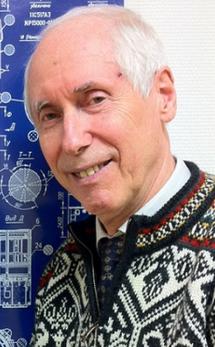 |
31 December 2015: Nicolay Tolyarenko, Russia, member of Engineering Sciences section
He was the Director of the Master of Space Studies Program at the International Space University (ISU) at Illkirch-Graffenstaden, France. He had an outstanding Industry, Research and Teaching Career in Russia and at ISU. All his career has been devoted to space related sciences and technics, as researcher, engineer and then as a professor. He was well known as a specialist about orbital mechanic and ballistic problems. He worked in this field at the (then named) NPO Energia consortium, the largest space enterprise in Russia. As an engineer and mathematician, his PhD dissertation of 1969 covered this topic and was named “On Some Problems of the Manned Moon Missions Using Intermediate Orbits”. It was related to work he did on the Russian Moon program. Author of 750 publications. He was elected Corresponding Member in 2001 and Full Member in 2006 of the International Academy of Astronautics. |
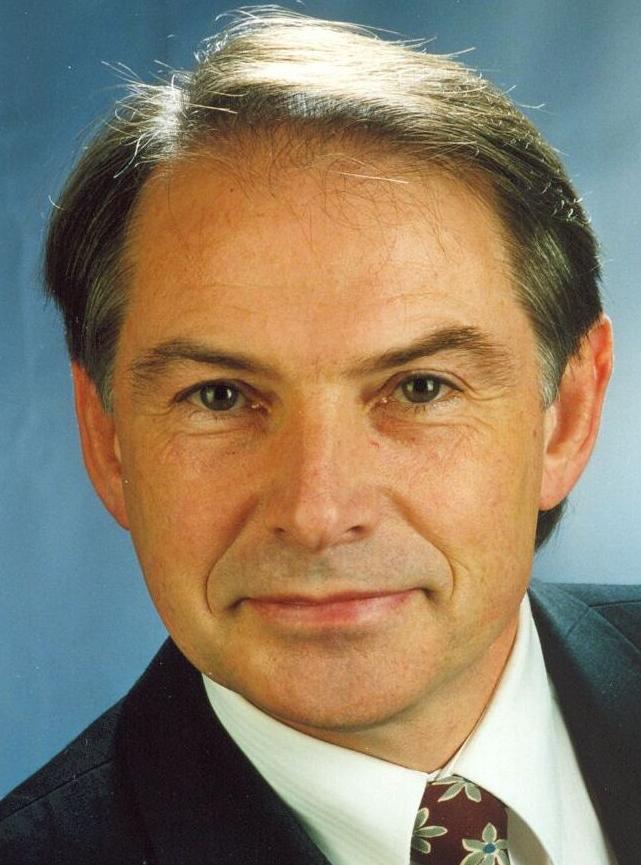 |
08 December 2015: Hans-Peter Roeser, Germany, member of Basic Sciences section
Prof. Roeser was a member of the IAA Board of Trustees (BOT) and the IAA Scientific Activities Committee (SAC) Vice-Chair for studies. He was director and head of the Institute of Space Systems (IRS) at Stuttgart University from 2002 until February 2014 and since then he has been deputy director of the institute. He was the founder of the German SOFIA Institute. Roeser was the first German on the Kulper Airborne Observatory (KAO). Even the spaceport Baden-Württemberg (RZBW) at Stuttgart University, with about 170 employees one of the largest European scientific research institutions in space, was initiated by Hans-Peter Roeser. He was also the founder and mentor of the Stuttgart small satellite program, in which students can build small satellites. In university education, he formed the IRS a Europe-wide unique range of lectures, practicals and exercises in space technology and space applications. Born in Polch, he studied physics at the Rheinische Friedrich-Wilhelms University in Bonn. In 1979 he received his doctorate in Applied Physics at the Rheinische Friedrich-Wilhelms University and the Max Planck Institute for Radio Astronomy in Bonn. In honor of Hans-Peter Roeser the International Astronomical Union has named a minor planet on his name: (52308) Hanspeterröser. He was elected Corresponding Member in 1998 and Full Member in 2003 of the International Academy of Astronautics. |
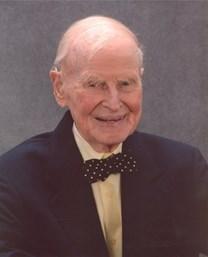 |
21 October 2015: Frederick C. Durant III, USA, member of Social Sciences section
Frederick C. Durant III, an authority on spaceflight and rocketry who for 15 years was an assistant director of the Smithsonian Institution’s National Air and Space Museum, died on October 21, 2015. From 1965 until he retired in 1980, Mr. Durant was a top officer at the Air and Space Museum. He played a key role in building up its space and rocketry collections and its space-art collections. The Air and Space Museum opened on the Mall in 1976. Before joining the Smithsonian’s staff, Mr. Durant was an engineer with E.I. DuPont de Nemours & Co., a World War II Navy flight instructor and test pilot, a rocket engineer with Bell Aircraft, engineering director at the Naval Rocket Test Station in Dover, N.J., and an aerospace specialist at the management consulting firm Arthur D. Little Inc. in Cambridge, Mass. In the mid 1950s, he helped organize the short-lived Project Orbiter, a joint Army-Navy satellite project headed by aerospace engineer Wernher von Braun. In the 1950s he was president of the American Rocket Society, now known as the American Institute of Aeronautics and Astronautics. On retiring from the Smithsonian, Mr. Durant was a consultant and historian with Intelsat. For several years, he was author of the “Rockets and Guided Missiles” and the “Space Exploration” entries in the Encyclopedia Britannica. He was elected Corresponding Member in 1966 and Full Member in 1984 of the International Academy of Astronautics. |
 |
18 October 2015: Robert W. Farquhar, USA, member of Social Sciences section
Robert W. Farquhar was a planetary pioneer who designed some of the most esoteric and complex spacecraft trajectories ever attempted. A 50-year veteran of deep-space missions, Farquhar made pivotal contributions to the historic explorations of asteroids and comets. Farquhar joined the Johns Hopkins University Applied Physics Laboratory (APL) in 1990. During his 16 years at the Laboratory he applied his trajectory design skills, along with extensive space mission experience and unique insight, to a wide range of challenges in mission design and navigation. He played a key role in APL’s initiatives to support deep-space missions through NASA’s Discovery program. He was the Senior Staff Engineer of the Space Department, Johns Hopkins Univ, Applied Physics Lab, Maryland, USA. He made major and unique contributions to calculations of spacecraft trajectories, creating very effective trajectories through the use of natural gravitational forces in the universe. His contributions have led to the acquisition of a great deal of new scientific data because his inventive design of trajectories has made it possible to send spacecraft to close encounters with several different comets. Author of more than 80 publications. He was elected Corresponding Member in 1993 and Full Member in 1996 of the International Academy of Astronautics. |
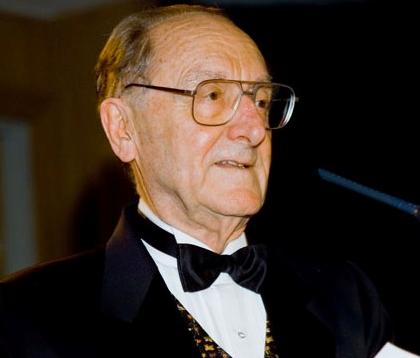 |
12 October 2015: George E. Mueller, USA, honorary member
Dr. George E. Mueller (USA) born 16 July 1918, died on 12 October 2015 in California, USA. Dr. George E.Mueller was the President of the International Academy of Astronautics (IAA) during 16 years from 1982 until 1999. He was elected a corresponding member (CM) of the Academy in 1966 and became a full member (M) in 1978. The IAA Board of Trustees elected the outgoing Academy President George E. Mueller in 1997 an Honorary Member, to join the ranks of astronaut John Glenn (USA) and cosmonauts Adrian Nikolayev and Valentina Nikoloyeva-Tereshkova (Russia). He also received the highest recognition of the Academy, the von Karman Award, in 1999. In 1982 Dr. George E. Mueller when taking the rein of the Academy asked a total revision of the IAA statutes. The main goal was to give the IAA full independence from any other organization and this transformation, prepared in Montreux, Switzerland, in February 1983 occurred during an extraordinary meeting of the Academy in Geneva in October 1983 where he received full support of the members. On this occasion, he created in the Academy membership a social science section that is the home of experts of space law, economy, history, management, etc. He also unlocked the yearly quotas for elections to a maximum of 100 M and CM and this limit is still active today. Shortly after the Montreux historic changes the Academy moved its headquarters to the 6 rue Galilee, Paris 16th France. Dr. George E. Mueller initiated many new standalone conferences that now cumulate 15 to 20 each year, created nearly on hundred committees, initiated the cosmic studies that now cumulate to more than 65 studies published and 40 studies in preparation. No doubt that Dr. George E. Mueller installed the IAA on new tracks that are giving fruits in those years as exemplified by the three heads of space agencies Summit of 2010, 2014 and 2015 that assembled for the first time historic numbers of Chiefs of Agencies for promoting international cooperation. Dr. George E. Mueller began his career at Bell Telephone Lab, became a Professor at Ohio State University, followed by Ramo Wooldrige as Head of the Electronic division where he was responsible for the guidance of Atlas, Titan, Thor and Minuteman ballistic missiles. In 1963 Jim Webb, NASA Administrator asked him to be the head of the manned space flight program, responsible for the Gemini, Apollo/Saturn and related programs. He was the originator of the Skylab and the “father” of the space shuttle. After successful completion of the second lunar landing he became Senior Vice-President of General Dynamics Corp. and later President of System Development Corporation, Senior Vice-President of Burroughs Corporation and finally the key executive in the development of commercial space launcher capability at the Kistler Aerospace Company. |
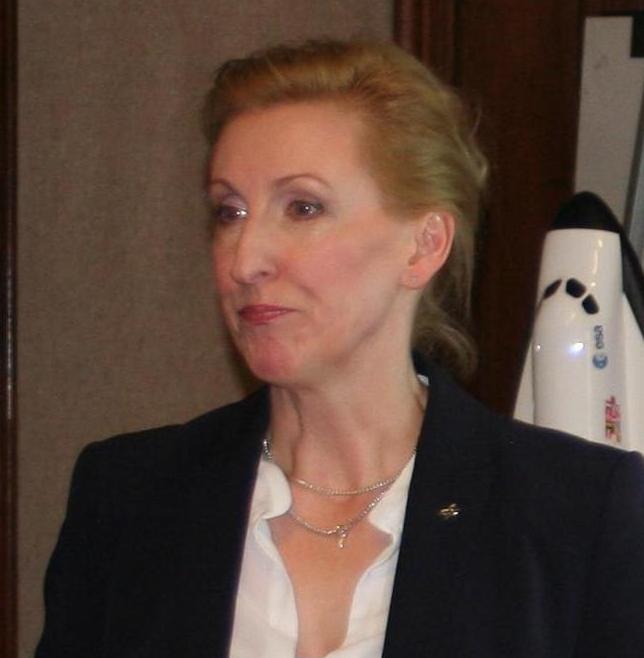 |
29 August 2015: Andrea Boese, Germany, member of Life Sciences section
Academician Andrea Boese, Germany, a true supporter of the International Academy of Astronautics is no longer with us. She passed away at 53. The President, the Board of Trustees and the Secretary General of the Academy and Academicians express grief to her family, her professional colleagues and friends. She was extremely active as a member of four IAA studies and did not miss any Academy Day during nearly 10 years. Andrea was chair of IAA Life Sciences Commission and actively participated within DLR to the 2010 and 2014 Heads of Space Agencies Summits in Washington DC. Until the recent days she helped prepare the upcoming Heads of Space Agencies Summit on Climate Change and Disaster Management in Mexico in a new capacity at the European Space Agency that she recently joined in July 2015. At DLR she was Chief Diversity Officer, and prior Manager Strategy and Alliances, Corporate Development and External Relations Department in Cologne, Germany. She has played a significant role in the development of international activities and cooperation in the space life science, both in her previous position at the Institute for Aerospace Medicine in Cologne and in her role at DLR. She has made important contributions to international research cooperation, particularly to cooperation between Germany, Russia and the U.S. She has contributed personally to the cooperative activities, playing a central role in both managing and carrying out these activities. Her investigations in the field of metabolism and, in particular, in the field of mineral metabolism in bone tissue are principally important for the development of new methods and means of countermeasures against adverse effects of weightlessness on human organism, that undoubtedly is personal contribution into the development of space biology and medicine. The Academy has lost an active and respected member. She was elected Corresponding Member of the Academy in 2008 and Full Member in 2013 of the International Academy of Astronautics. |
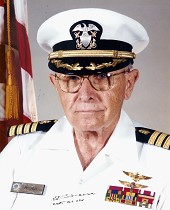 |
04 August 2015: Robert E. Mitchel, USA, member of Life Sciences section
Capitan Mitchel was a Commanding Officer of the Naval Aerospace Medical Research Laboratory, Pensacola, Florida. He established an electrocardiographic data bank and supervised aviation physical examinations done by the Naval School of Aviation Medicine. He was responsible for research coordination of aviation medicine, biophysics, biomedical, accoustical sciences and veterinary sciences division. He served as a member of a triservice Aeromedical Research Panel. Author of several publications. He was elected Corresponding Member in 1995 and Full Member in 2000 of the International Academy of Astronautics. |
| 28 June 2015: Bozidar Bakotic, Croatia, member of Social Sciences section
Božidar Bakotić has been a long-time teacher of public international law at the Faculty of Law, University of Zagreb, Croatia. e has spent his whole professional career at the same Faculty, first as assistant at the Faculty Institute of International Law and International Relations, and later at the Chair of International Law as assistant professor (1967-1972), associate professor (1972-1978) and full professor (1978-2006). He was dean (1976/77), chairman of the Faculty Council, director of the Institute of International Law and International Relations, and chairman of Postgraduate Studies in International Law and International Relations. At the state level, he was elected by the Croatian Parliament member of the National Council for Higher Education (1998-2000). As early as 1968, as member of the delegation of the former Yugoslavia, he participated in Vienna in the first United Nations Conference on the Exploration and Peaceful Uses of Outer Space. In 1988, he was elected full member of the International Academy of Astronautics and served on its Committee on Scientific Legal Liaison (1988-1997). He was appointed part-time legal adviser to the Croatian Ministry of Foreign Affairs. In 1995 Professor Bakotić was appointed conciliator of the Court of Conciliation and Arbitration within the Organization for Security and Co-operation in Europe, and in 1999 to the Permanent Court of Arbitration in the Hague. He was elected Full Member of the International Academy of Astronautics in 1988. |
|
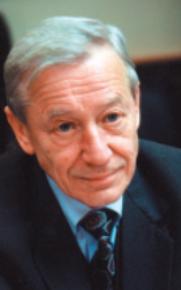 |
28 May 2015: Yury M. Kolosov, Russia, member of Social Sciences section
Professor Dr. Kolosov was born on September 7, 1934 in the Syasstroy city, Leningrad Region, former USSR. He is known in international science and practice as an extraordinary talented, kind and honest person. He contributed significantly to the legal research and formation of sources of law, correspondingly, in the field of the following issues and branches of International Law: International Responsibility and Liability; International Air Law; Mass Media and International Law; International Human Rights Law; and International Space Law (specifically, his contribution to the development of the principles of the International Space Law). He lectured on diverse issues of International Law at many universities all over the world and he is author of over 250 publications, among them 5 monographs. He was elected Full Member in 1985 of the International Academy of Astronautics. |
 |
21 May 2015: Harald Posch, Austria, member of Engineering Sciences section
Harald Posch’s career in the space sector spanned more than three decades, first in industry with Austrian Aerospace and Österreichische Raumfahrt- und Systemtechnik GmbH, then in governmental service. Since 2005, he led Austria’s Aeronautics and Space Agency, part of the Research Promotion Agency, the FFG. In this function, he was key in shaping Austria’s engagement in space and represented his country in international forums and organisations. He was also instrumental in the setting up of the European Space Policy Institute (ESPI) in Vienna, and served as Chair of its General Assembly since its inception. Within ESA, too, Harald Posch held the most prominent of roles, in particular those of Industrial Policy Committee (IPC) Chair and, from 1 July 2014, Chair of Council. In this latter function, he played a central role in the preparation of last year’s Council meeting at ministerial level in Luxembourg. He was elected Corresponding Member in 2010 and Full Member in 2013 of the International Academy of Astronautics. |
 |
16 May 2015: Antonio Fabrizi, Italy, member of Engineering Sciences section
He was Director of Launchers at the European Space Agency (ESA), Paris, France. Between 1975 and 1989 he held several positions, and was responsible for feasibility studies on Ariane boosters. In 1990 he was appointed Commercial Manager at Fiat Spazio in charge of developing new initiatives. Then in 1993 he returned to BPD to become head of the Space Transportation Systems Business Unit. From 1997 to 1999 he carried out the same responsibilities for FiatAvio’s Space Business Unit where his duties included responsibility for the Cyclone and Vega programmes. In 2000 he became Vice President of FiatAvio’s Space Business Unit, with responsibility for all space activities. He has held several directorships of companies, including Europropulsion, ELV, Regulus and Arianespace. |
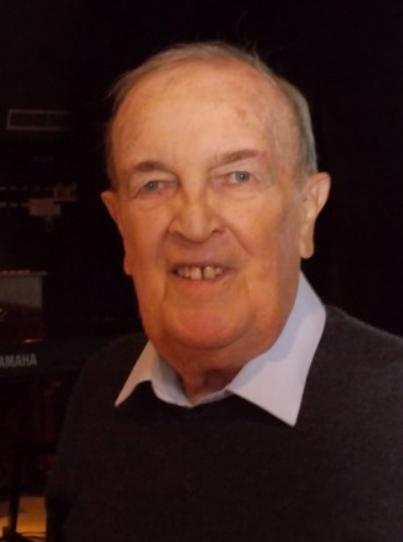 |
10 May 2015: Gunnar Stette, Norway, member of Engineering Sciences section
He was a Professor at the Division of Telecommunications, Norwegian Institute of Technology, Norway. He was a Senior Scientist at the SHAPE Technical Center, the Hague, Netherlands, working with the NATO satellite system, NATO II ground communications equipment and NATO III spacecraft communications subsystem. He also was a Senior Scientist at the Electronics Research Laboratory, working with satellite communications projects related to NORSAT, SUDOSAT, INMARSAT. He is responsible for space communications and basic space technology. He was elected Corresponding Member in 1995 and Full Member in 2001 of the International Academy of Astronautics. |
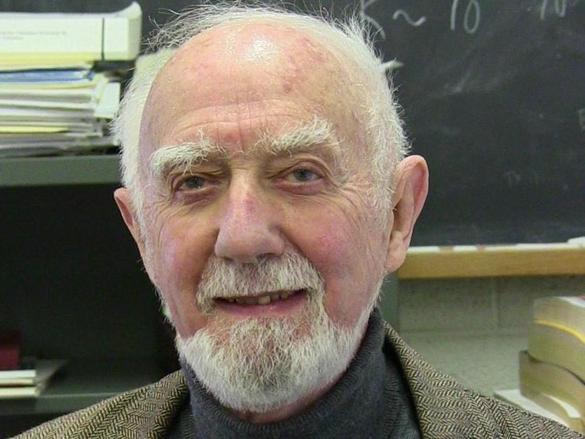 |
09 April 2015: Alexander Dalgarno, USA, member of Basic Sciences sectionAlexander Dalgarno was Known as the “father of molecular astrophysics”. He made contributions in theoretical chemistry, scattering theory, atmospheric physics & chemistry and astrophysics. He was a physicist at the Smithsonian Astrophysical Observatory and was formerly the editor of the Astrophysical Journal Letters. He joined the Harvard department of astronomy in 1967. He held the positions of acting director of Harvard College Observatory, chairman of the department of astronomy, associate director of the Harvard-Smithsonian Center for Astrophysics and director of the Institute for Theoretical Atomic and Molecular Physics. His research covered three main areas: theoretical atomic and molecular physics, astrophysics and aeronomy (the study of the upper atmosphere). He was the author of more than 600 publications. He was elected Corresponding Member in 1971 and Full Member in 1985 of the International Academy of Astronautics. |
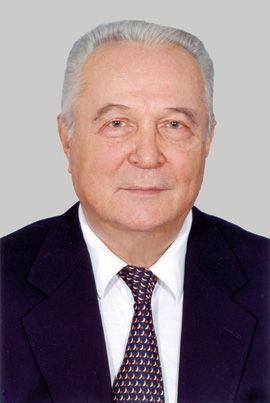 |
08 January 2015: Victor P. Legostayev, Russia, member of Engineering Sciences section
Professor Victor P. Legostayev was a well-known in the field of control systems development. Since 1955 he was a scientific worker in the Institute of Problems of Control, Academy of Sciences, USSR. Since 1980 he was a member of Intercosmos Council. Since 1986 he was the Chief of the department of Glavcosmos. His main activity ws devoted to control system of space vehicles. He took part in theoretical development of control systems of space vehicles: Vostok, Voskhod, Soyuz, Soyuz-T, and the stations Salyut and Mir. From 1971 to 1975 he took part in the development of the Soviet-American project Soyuz-Apollo. From 1989 to 2014 V.P. Legostaev as Vice-President, First Deputy General Designer headed work under the International Space Projects (The International Space Station and the Sea-Based Rocket and Space Complex Sea Launch), as well as supervises the development of telecommunication satellites and remote sensing satellites, organization of research from board the manned complexes. He was elected Corresponding Member in 1987 and Full Member in 1990 of the International Academy of Astronautics. |
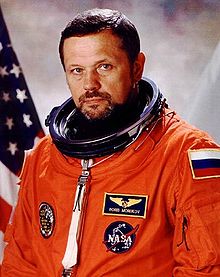 |
01 January 2015: Boris V. Morukov, Russia, member of Life Sciences section
He was Head of Department, State Scientific Centre Russian Federation, Institute for Biomedical Problems RAS, Moscow, Russia. He was a well-known expert at metabolic and immune researches which are performed in the ground experiments, which are simulating physiological effects of the microgravity. His specific interest was focused on the investigation of changes of calcium metabolism and its correction by specific pharmacological agent. He coordinated scientific projects dedicated to the development of countermeasures to the negative metabolic changes that occur during hypokinesia and microgravity. As a cosmonaut-physician, he completed medical training in cardiology, gastroenterology, otolaryngology, stomatology, ophthalmology, and cardiopulmonary resuscitation. He participated in a joint American-Russian medical experiment on STS-60, Mir 18/STS-71 and all other Mir-NASA Project Missions. He was elected Corresponding Member in 2005 and Full Member in 2010 of the International Academy of Astronautics. |
We use cookies to make our website and shop effective, secure and user-friendly. For more information see our Privacy Policy. Use of this Site is subject to express terms of use. By using this site, you signify that you agree to our Privacy Policy and the use of cookies and agree to be bound by these Terms and Conditions.
